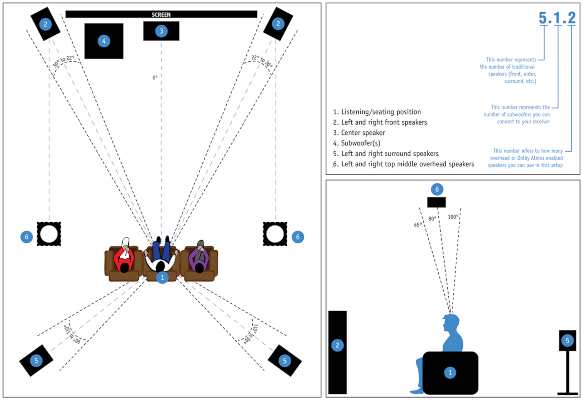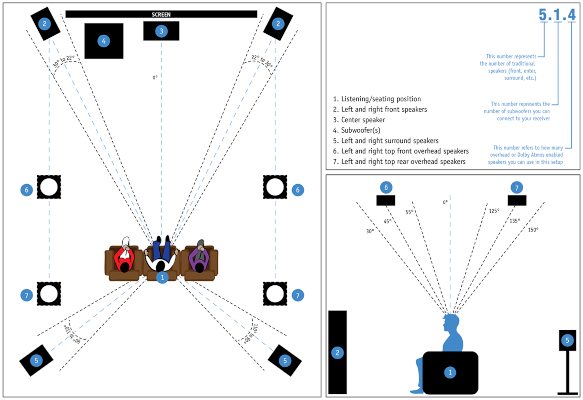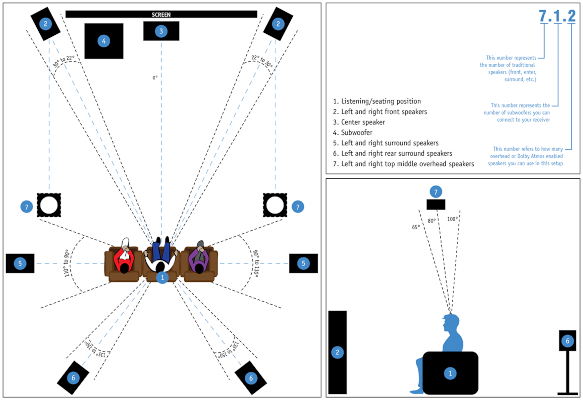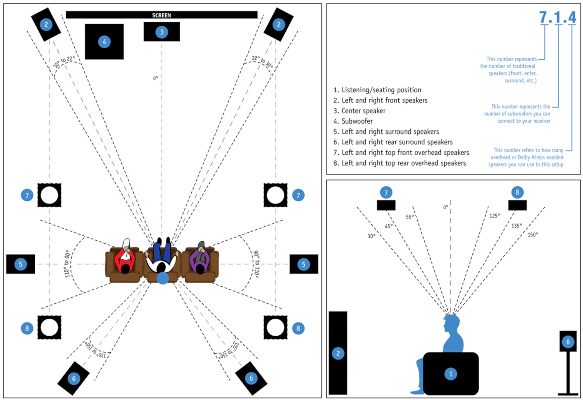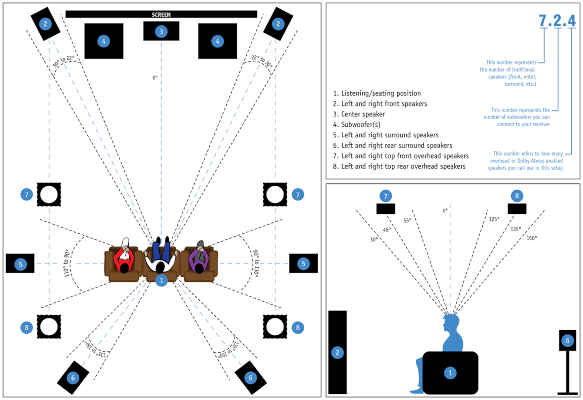Frequently Asked Questions
(FAQs)
The list below are some of the most frequently asked questions from our speaker customers. If you are unable to find an answer, please feel free to contact your RBH Sound Authorized Dealer or RBH Sound for more information.
To contact Technical Support call
(801)543-2200
or email
tech@rbhsound.com
The proprietary aluminum drivers used in RBH products have several advantages over other driver cone materials. The RBH aluminum cone has a greater strength-to-weight ratio than polypropylene (plastic), paper or woven glass cones. Aluminum is the material of choice for making products where high tensile strength and low weight are essential. It is important for a cone to act like a piston through the operating range of the driver. Paper and plastic cones tend to flex or "break up" at low and high-frequency extremes. This flexing results in nonlinear response (breakup and compression) whereas our aluminum cone driver retains its pistonic motion throughout the pass band even when driven to extremes
When first purchasing an RBH loudspeaker please be aware of the "break-in process" that will normally occur during the first several hours of operation. During this period the driver suspensions will loosen. This is most noticeable with the woofer or low-frequency driver in a system. As the woofer suspension loosens, the resonant frequency of the driver decreases, and the efficiency increases slightly. The increase in low-frequency output will change the tonal balance of the speaker system resulting in a warmer sound with better bass definition and extension.
The attenuation switch, or switches, located on an in-wall or in-ceiling (Visage Line) speaker baffle control the tweeter or woofer levels. Setting the switch to "+" increases the tweeter level 3dB. Setting the switch to "-" decreases the tweeter level 3dB. Some models also have a woofer attenuation switch that operates the same way.
The fabric dome tweeter used in the Signature Series offers extended frequency response and is manufactured to high tolerance specifications. It is an excellent tweeter and continues to be a staple in most loudspeakers. Due to its more traditional construction, it cannot handle higher power as well as the AMT. Also, frankly, it comes down to cost. The standard Signature speaker is a lower price but some may actually prefer the sound of the fabric dome tweeter. It's personal listening preference. The AMT (Air Motion Transformer) is a type of electroacoustic transducer invented by noted physicist and scientist Dr. Oskar Heil (1908–1994), it operates on a different transduction principle. The diaphragm of the AMT is of pleated shape similar to a bellows. The AMT moves air laterally in a perpendicular motion using a metal-etched folded sheet made of polyethylene terephthalate (PET) film. AMT tweeters are much more responsive to the highest frequencies and provide wider dispersion thus allowing more of a "sweet spot" listening area.
As a general guideline, we recommend for matching RBH Subwoofers to a given room volume is as follows:
|
Rooms Size (Cubic Feet) |
|
Subwoofer Models |
|
Up to 2800 |
|
12N-SF/R, 12P-SF/R, S-12HP, S-12HPS, S-12N, SI-12/3, SI-12/9, 88MS |
|
Over 2800 |
|
1212N-SF/R, 1212P-SF/R, S-1212HP, S-1212N, S-1212P, SI-1212/3, SI-1212/9, SI-1212/R9, 1212N-MS/R, 1212P-MS/R, SV-1212NR, SV-1212PR |
Some RBH amplifiers are class AB-based and use analog-type power supplies. Our most recent amplifiers are based on modern, highly efficient Class-D architecture providing high-power output and more control vis DSP (Digital Signal Processing).
Most RBH architectural and freestanding loudspeakers use polyswitch protection to protect the tweeter from excessive current. If a loudspeaker is played at extremely loud levels, this protection circuit will activate and attenuate the tweeter output until the volume is reduced to a safe level. If a RBH loudspeaker is being powered by a smaller than recommended amplifier, it is possible the amplifier is clipping which will also cause the polyswitch protection to activate.
Since bass reproduction in a room is very dependent upon the dimensions of the room and where the listening position is in the room, we recommend experimenting with subwoofer placement for the best results. Every room is different and there is no standard rule as to the best position for subwoofer placement in a room. Bass frequency response, as well as phase and integration with other speakers in the room, are affected by subwoofer placement. Since the frequencies produced by a subwoofer are relatively non-directional you may have more choices for placement than a full-range loudspeaker. Often times this means a subwoofer may be placed in a room where it fits best aesthetically. To start with we recommend placement along a wall several feet from a corner. Placement in a corner will excite the most room modes, however, bass can oftentimes sound boomy with the subwoofer placed in a corner due to excessive reinforcement of the very lowest frequencies.
Placing a speaker so a wall is directly behind it will reinforce the bass frequencies and make the sound subjectively warmer. A speaker that is inherently bass shy (not full range) may benefit from this type of placement due to reinforcement of the bass frequencies. Subwoofers generally benefit from this type of placement since they only play low frequencies. Large full-range speakers may benefit from being positioned near a back or side wall, but it should be noted that because of the increase in bass frequencies, the tonal balance of the speaker will shift. This can be an issue with a full-range speaker.
All RBH Visage products incorporate a swivelable tweeter to provide more controlled dispersion of the very highest frequencies. At lower frequencies, RBH in-ceiling speakers are designed to provide broad dispersion of sound into the listening environment. In fact, designing a speaker to allow excessive pivoting of the drivers can degrade sound quality due to added diffraction that occurs when the aimable drivers are obstructed by the speaker frame. The following image compares the 30-degree off-axis frequency response of an RBH in-ceiling speaker to a comparable "aimable" in-ceiling product made by another speaker brand. We do offer in-ceiling models that have a fixed 15-Degree offset which does allow some directionality that can be useful to enhance surround and Left / Right effects when most of a theater must be in the ceiling.
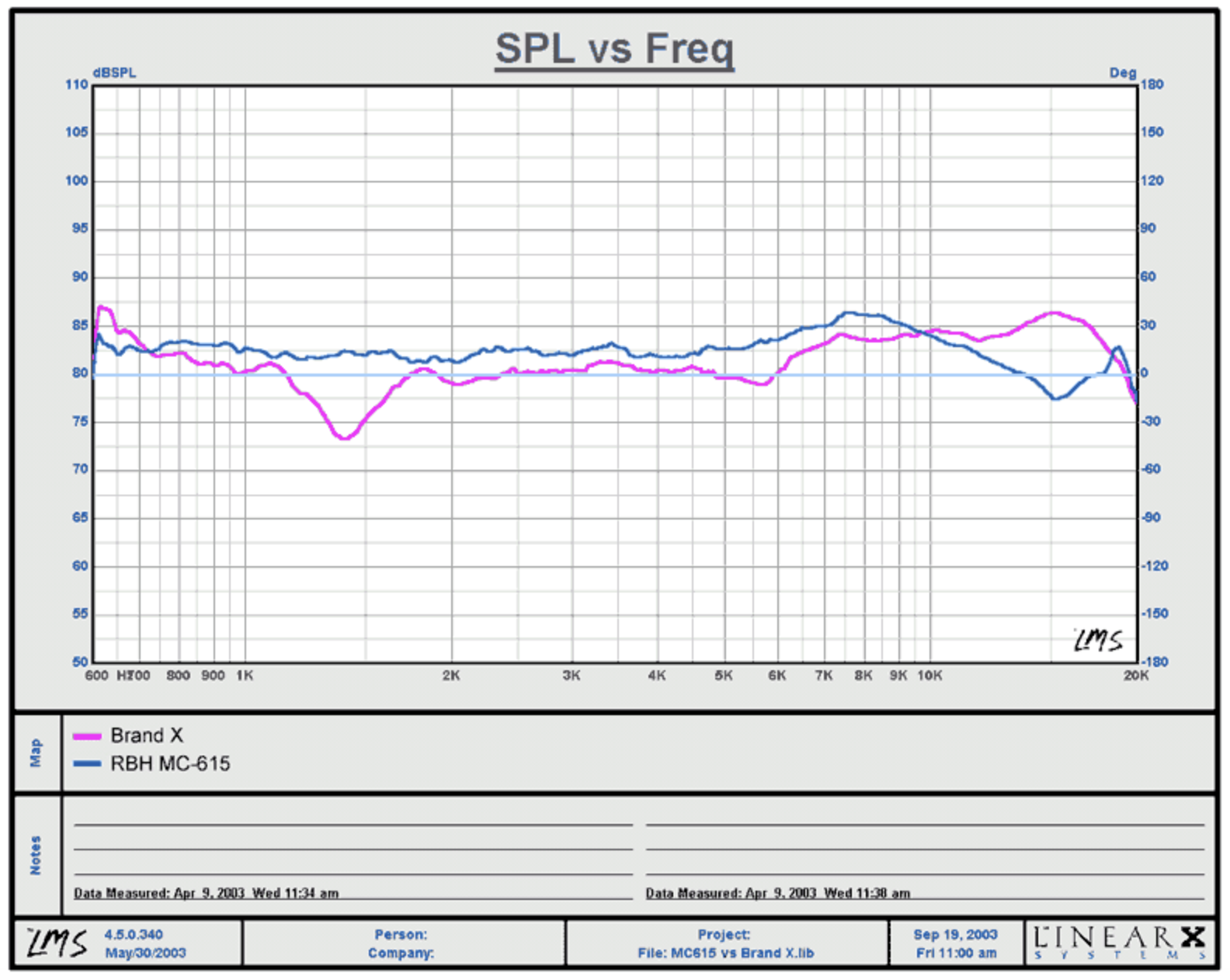
Here are several diagrams for speaker setups. Click the image to open a larger view.




